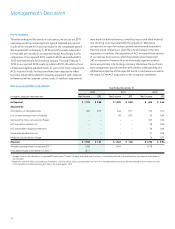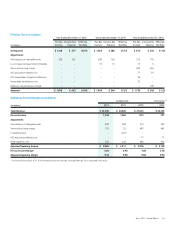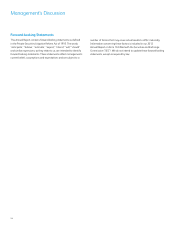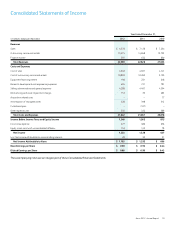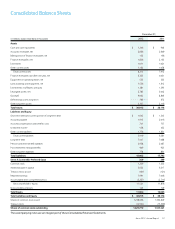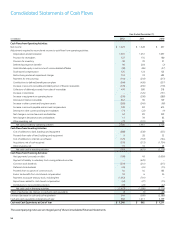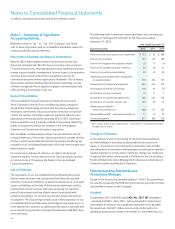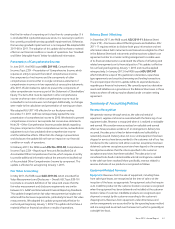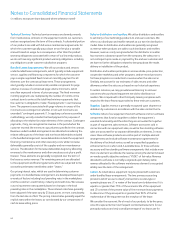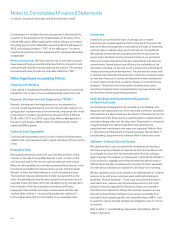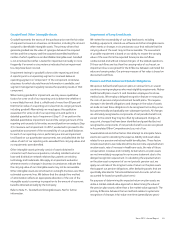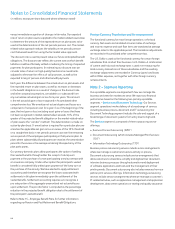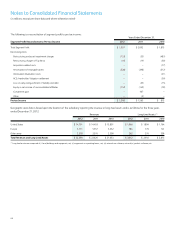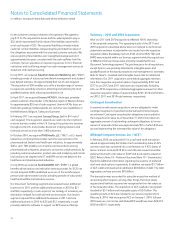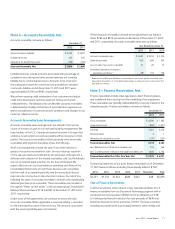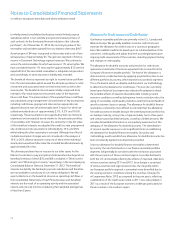Xerox 2012 Annual Report Download - page 64
Download and view the complete annual report
Please find page 64 of the 2012 Xerox annual report below. You can navigate through the pages in the report by either clicking on the pages listed below, or by using the keyword search tool below to find specific information within the annual report.Notes to Consolidated Financial Statements
(in millions, except per-share data and where otherwise noted)
62
Sales to distributors and resellers: We utilize distributors and resellers
to sell many of our technology products to end-user customers. We
refer to our distributor and reseller network as our two-tier distribution
model. Sales to distributors and resellers are generally recognized
as revenue when products are sold to such distributors and resellers.
However, revenue is only recognized when the distributor or reseller
has economic substance apart from the company, the sales price is
not contingent upon resale or payment by the end user customer and
we have no further obligations related to bringing about the resale,
delivery or installation of the product.
Distributors and resellers participate in various rebate, price-protection,
cooperative marketing and other programs, and we record provisions
for these programs as a reduction to revenue when the sales occur.
Similarly, we account for our estimates of sales returns and other
allowances when the sales occur based on our historical experience.
In certain instances, we may provide lease financing to end-user
customers who purchased equipment we sold to distributors or
resellers. We compete with other third-party leasing companies with
respect to the lease financing provided to these end-user customers.
Supplies: Supplies revenue is generally recognized upon shipment or
utilization by customers in accordance with the sales contract terms.
Software: Most of our equipment has both software and non-software
components that function together to deliver the equipment’s
essential functionality and therefore they are accounted for together
as part of equipment sales revenues. Software accessories sold in
connection with our equipment sales, as well as free-standing software
sales are accounted for as separate deliverables or elements. In most
cases, these software products are sold as part of multiple element
arrangements and include software maintenance agreements for
the delivery of technical service, as well as unspecified upgrades or
enhancements on a when-and-if-available basis. In those software
accessory and free-standing software arrangements that include more
than one element, we allocate the revenue among the elements based
on vendor-specific objective evidence (“VSOE”) of fair value. Revenue
allocated to software is normally recognized upon delivery while
revenue allocated to the software maintenance element is recognized
ratably over the term of the arrangement.
Leases: As noted above, equipment may be placed with customers
under bundled lease arrangements. The two primary accounting
provisions which we use to classify transactions as sales-type or
operating leases are: (1) a review of the lease term to determine if it is
equal to or greater than 75% of the economic life of the equipment
and (2) a review of the present value of the minimum lease payments
to determine if they are equal to or greater than 90% of the fair
market value of the equipment at the inception of the lease.
We consider the economic life of most of our products to be five years,
since this represents the most frequent contractual lease term for our
principal products and only a small percentage of our leases are for
Technical Services: Technical service revenues are derived primarily
from maintenance contracts on the equipment sold to our customers
and are recognized over the term of the contracts. A substantial portion
of our products are sold with full service maintenance agreements for
which the customer typically pays a base service fee plus a variable
amount based on usage. As a consequence, other than the product
warranty obligations associated with certain of our low end products,
we do not have any significant product warranty obligations, including
any obligations under customer satisfaction programs.
Bundled Lease Arrangements: We sell our products and services
under bundled lease arrangements, which typically include equipment,
service, supplies and financing components for which the customer
pays a single negotiated fixed minimum monthly payment for all
elements over the contractual lease term. These arrangements
also typically include an incremental, variable component for page
volumes in excess of contractual page volume minimums, which
are often expressed in terms of price-per-page. The fixed minimum
monthly payments are multiplied by the number of months in the
contract term to arrive at the total fixed minimum payments that
the customer is obligated to make (“fixed payments”) over the lease
term. The payments associated with page volumes in excess of the
minimums are contingent on whether or not such minimums are
exceeded (“contingent payments”). In applying our lease accounting
methodology, we only consider the fixed payments for purposes of
allocating to the relative fair value elements of the contract. Contingent
payments, if any, are recognized as revenue in the period when the
customer exceeds the minimum copy volumes specified in the contract.
Revenues under bundled arrangements are allocated considering the
relative selling prices of the lease and non-lease deliverables included
in the bundled arrangement. Lease deliverables include the equipment,
financing, maintenance and other executory costs, while non-lease
deliverables generally consist of the supplies and non-maintenance
services. The allocation for the lease deliverables begins by allocating
revenues to the maintenance and other executory costs plus a profit
thereon. These elements are generally recognized over the term of
the lease as service revenue. The remaining amounts are allocated
to the equipment and financing elements which are subjected to the
accounting estimates noted below under “Leases.”
Our pricing interest rates, which are used in determining customer
payments in a bundled lease arrangement, are developed based upon
a variety of factors including local prevailing rates in the marketplace
and the customer’s credit history, industry and credit class. We reassess
our pricing interest rates quarterly based on changes in the local
prevailing rates in the marketplace. These interest rates have generally
been adjusted if the rates vary by 25 basis points or more, cumulatively,
from the last rate in effect. The pricing interest rates generally equal the
implicit rates within the leases, as corroborated by our comparisons of
cash to lease selling prices.


